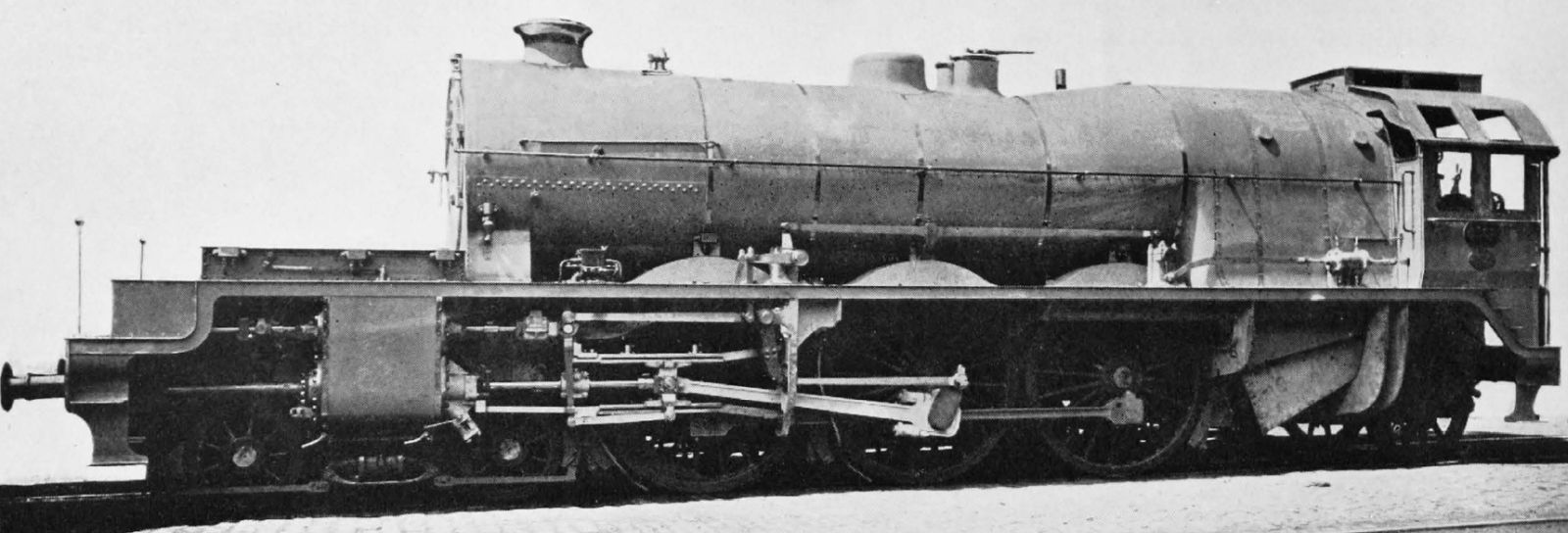A few years before the First World War, Jean-Baptiste Flamme developed a very powerful boiler that was to be installed in a freight locomotive and an express locomotive at the same time. So from 1909 the type 36 with the 2-10-0 wheel arrangement and from 1910 the type 10 Pacific were built. Since the boiler was relatively short with a large diameter and the chassis of the Pacific naturally had a long overall wheelbase, the appearance of the Locomotive somewhat unusual with a long overhang in front of the smoke box.
The boiler had a grate area of five square meters and narrowed in front of the firebox. It delivered 2,250 hp, making the type 10 one of the most powerful Pacific locomotives in Europe. Since the bogie hardly had to carry any weight from the smoke box, the load was kept within limits despite the four cylinders with simple steam expansion. Due to the special arrangement of the cylinders, the inner cylinders were accessible from above, which made maintenance easier. Although the cylinders were in one plane, the inner ones drove the first driving axle and the outer ones the second. The problem, however, was the weight of the large firebox, which made the load of the trailing axle too high. The Type 36 didn't have this problem as the weight was carried by the coupled axles.
As a result, the second batch from 1912 was delivered with a smaller grate surface in order to reduce the axle load on the trailing axle. However, this reduced the power to 1,950 hp, while the service weight of the locomotives was reduced by around four tons. A total of 58 pieces were made by 1914, when production was stopped due to the war.

Locomotive Magazine, July 1910
In the 1920s, the locomotives received double chimneys and new feed pumps. From 1931 there was a major conversion with new feedwater heaters, a larger superheater, new safety valves and smoke deflectors. The result was an output of 2,700 hp for the first batch and 2,400 hp for the second batch. 1938 followed the installation of Kylchap blast pipes. A large proportion of the engines were retired in 1956 and some continued to run on a different route for three more years.